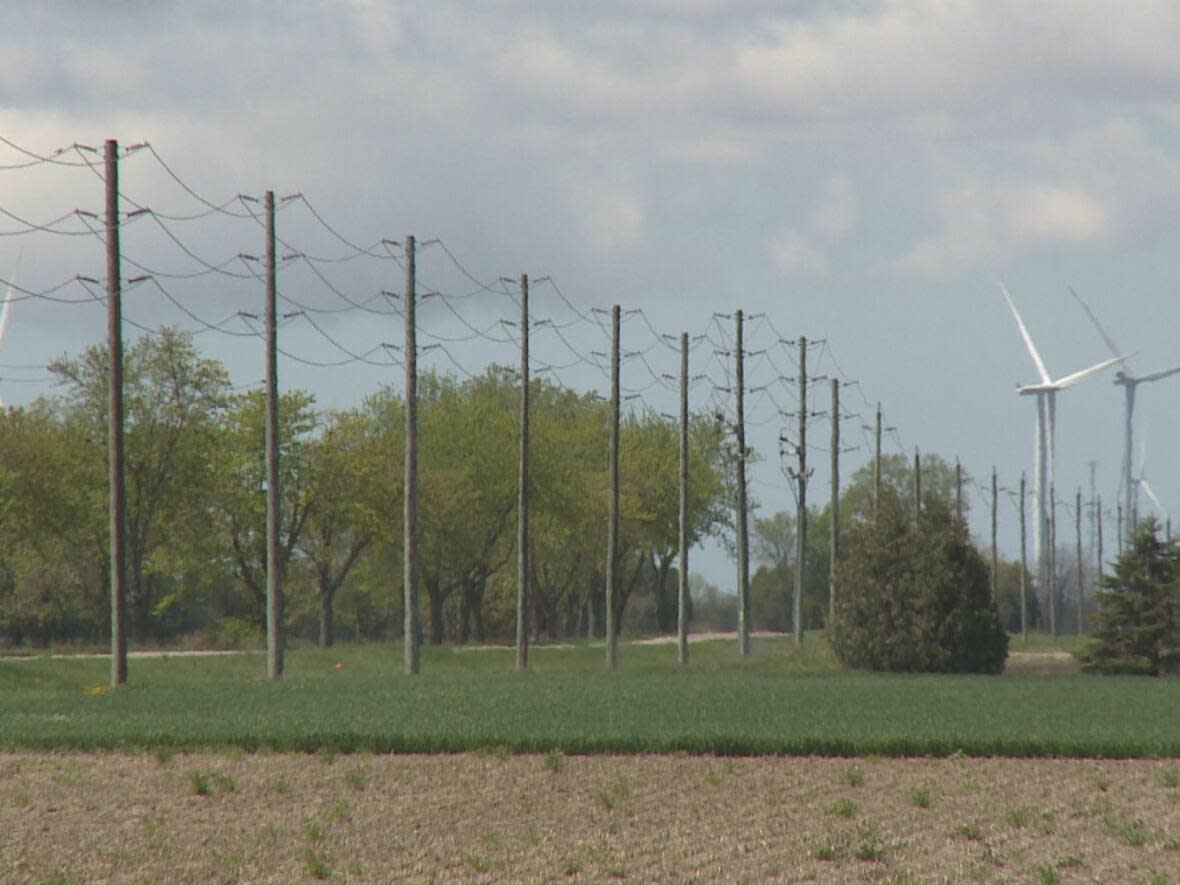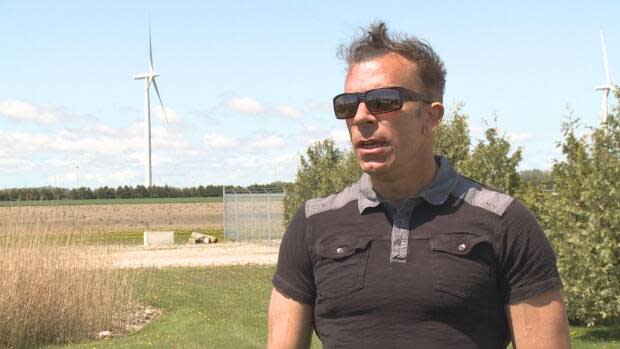Wind farms could power southwestern Ontario greenhouses directly if pilot project a success

The possibility of using wind turbines to supply southwestern Ontario greenhouses with clean electricity and hydrogen is the focus of a new pilot project.
The Hydrogen Integrated Greenhouse Horticultural (HIGH) Energy project is a joint venture between the University of Windsor, the Ontario Greenhouse Vegetable Growers (OGVG) and Kruger Energy.
It proposes building a commercial facility that takes locally-captured wind energy and turns it "into electricity and hydrogen for greenhouses that grow tomatoes, peppers, cucumbers, strawberries and other crops."
The pilot will make use of energy generated by a Kruger windfarm.
"In the last couple of years, we've taken a very deep dive into the power and energy requirements of the greenhouse sector," said Rupp Carriveau, professor in UWindsor's Faculty of Engineering, and director of the university's Environmental Energy Institute.
"There's been a real need to sort of boost the local availability of power while we wait for transmission lines to be built out," he said. "And it also helps sort of increase the resiliency and the dynamism of the system as a whole if you have more local supply."

Southwestern Ontario has the highest concentration of greenhouses in North America, but further expansion is being held back by a lack of locally-available energy, a media release from UWindsor states. However, existing windfarms could help with that, by supplying electricity and hydrogen directly to greenhouses.
Carriveau said most commercial windfarms in Ontario send power to the provincial grid.
The HIGH project proposes that wind farms "also be set up to service local needs, and that could be for local electricity needs to generate hydrogen," he said.
There are some steps that need to be taken before the pilot can really get going, however, Carriveau said. While some of the needed infrastructure is in place, some things, such as new transmissions lines, will need to be constructed.
The first step, however, is making a business case for the project, the media release states.
"To make a project like this go forward, one, the economics have to be there," he said. "We're hoping that that's the case because environmentally speaking, it looks really compelling to us. Logistically speaking, it looks compelling to us."
"But in addition to that, you have to have the regulations have to agree with what you're doing," Carriveau said. "And presently the model that we're proposing, there's no precedent for that in regulations."
He said they're looking to work with the province to identify and deliver policy that will enable something to happen.
Joe Sbrocchi of the OGVG said the project could help meet growing power needs in the area.
"The need for electricity in this area is obviously significant and going to grow, especially with electrification of cars and such and more industry moving in here, which obviously is a great thing," he said. "You want economic expansion."
Sbrocchi said he's hopeful the project will help make farming more efficient and sustainable.
"Our members have always ... fixated on that, on becoming as efficient at farming as possible," he said. "I think the other thing, too, quite honestly, is that it'll contribute to the ... domestic food supply in particular through wintertime, which I think is going to be pretty important too."

